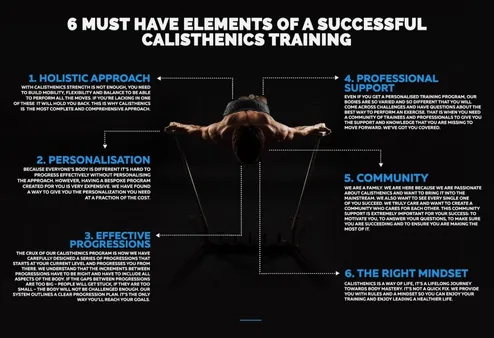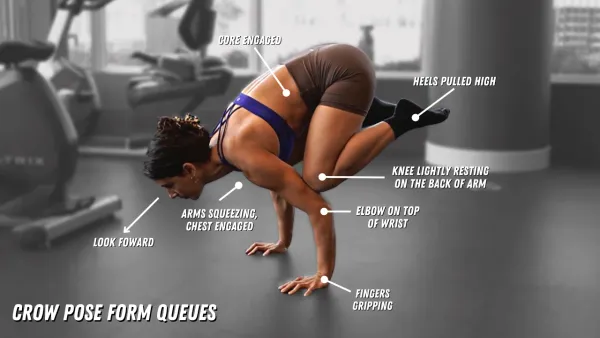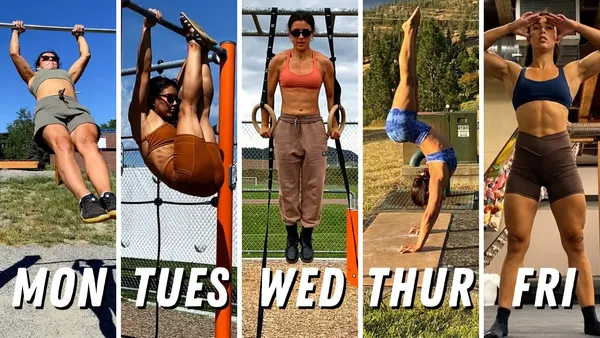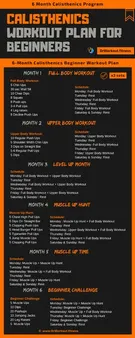Table of Contents
Unlocking your fitness potential with calisthenics requires setting clear goals. Kizworld presents a comprehensive guide to calisthenics goals, helping you define your aspirations, select appropriate exercises, and craft an effective routine. We'll delve into tips, strategies for overcoming plateaus, and the importance of patience and consistency. Embark on your calisthenics journey and achieve your fitness aspirations.
Lose Weight Effortlessly: Uncover the Calisthenics Goals That Transform Bodies
Fitness Goal | Suggested Calisthenics Exercises | Objective |
|---|---|---|
Improved Body Composition |
| Building muscle mass and reducing body fat |
Enhanced Strength |
| Increasing maximal strength |
Improved Mobility and Flexibility |
| Enhancing range of motion and flexibility |
Better Cardiovascular Health |
| Improving heart health and endurance |
Skill Acquisition |
| Developing specific calisthenics skills (e.g., handstands, backflips) |
I. Calisthenics Goals: Setting Realistic Targets for Success
SMART Goals
Setting SMART (specific, measurable, achievable, relevant, and time-bound) goals is crucial for success in any endeavor, including calisthenics. Specific goals are well-defined and provide a clear target to work towards. Measurable goals allow you to track your progress and adjust your training plan accordingly. Achievable goals are challenging but not impossible, which helps maintain motivation. Relevant goals align with your overall fitness goals and interests, while time-bound goals add a sense of urgency and keep you accountable.
Progressive Overload
Progressive overload is a fundamental principle of calisthenics training, which involves gradually increasing the difficulty of your workouts over time. This can be achieved by adding weight, reps, sets, or exercise variations. Progressive overload challenges your muscles and forces them to adapt, leading to strength and muscle growth.For example, if you start with 10 bodyweight push-ups, you could aim to increase the number of reps to 12 or 15, add a weight vest or resistance bands, or switch to a more challenging variation like decline push-ups or pseudo planche push-ups. Remember to listen to your body and rest when needed to avoid injury.
Related Posts
Discover a comprehensive guide to the most effective calisthenics exercises and their variations, helping you maximize your workouts and achieve your fitness goals.Learn the secrets to building muscle and strength using calisthenics, with tips and proven techniques to transform your bodyweight training.Unlock the secrets of training like a calisthenics pro, with insider tips and insights to elevate your workouts, overcome plateaus, and achieve superhuman strength.
Calisthenics Goals: Setting Realistic Targets for Success
II. Progressive Overload: The Key to Continuous Improvement
Progressive overload is a fundamental principle of calisthenics training. It involves gradually increasing the demands placed on your muscles over time, which forces them to adapt and grow stronger. This can be achieved by increasing the weight you lift, the number of repetitions you perform, or the intensity of your workouts.
There are many ways to implement progressive overload into your calisthenics routine. One simple method is to add weight to your exercises using a weighted vest or backpack. You can also increase the number of repetitions you perform in each set, or decrease the rest time between sets. As you get stronger, you can also try more challenging exercises, such as muscle-ups or handstands.
Method | Description |
|---|---|
Increase weight | Add weight to your exercises using a weighted vest or backpack. |
Increase repetitions | Increase the number of repetitions you perform in each set. |
Decrease rest time | Decrease the rest time between sets. |
Try more challenging exercises | As you get stronger, you can also try more challenging exercises, such as muscle-ups or handstands. |
Progressive overload is an essential part of any calisthenics training program. By gradually increasing the demands placed on your muscles, you can force them to adapt and grow stronger. This will help you achieve your calisthenics goals faster and more effectively.
Here are some tips for implementing progressive overload into your calisthenics routine:
- Start with a weight or resistance that is challenging but achievable.
- Gradually increase the weight or resistance over time.
- Listen to your body and rest when you need to.
- Be patient and consistent with your training.
With time and effort, you will be amazed at how strong you can become with calisthenics.
Related posts:
- How to Do a Muscle-Up
- The Best Calisthenics Gifts and Accessories
- The Best Calisthenics Quotes and Motivation
Progressive Overload: The Key to Continuous Improvement
III. Skill-Based Goals: Mastering Advanced Movements
Beyond building strength and endurance, calisthenics also offers a path to mastering advanced skills and movements. These skills not only enhance your physical abilities but also boost your confidence and self-expression. Whether you aspire to perform impressive tricks or develop a unique movement style, skill-based goals can add a new dimension to your calisthenics journey.
Some popular skill-based goals in calisthenics include:
- Tricking: Involves performing flips, twists, and other acrobatic maneuvers.
- Gymnastics: Focuses on developing strength, flexibility, and coordination through exercises like handstands, backflips, and muscle-ups.
- Martial arts: Incorporates calisthenics movements into self-defense techniques, enhancing agility, balance, and power.
Skill | Difficulty | Benefits |
|---|---|---|
Muscle-up | Advanced | Builds upper body strength, improves coordination |
Handstand | Intermediate | Enhances shoulder stability, improves balance |
Backflip | Advanced | Develops core strength, improves coordination |
To achieve skill-based goals, it's crucial to approach your training with patience and consistency. Start with foundational exercises that build the necessary strength and flexibility. Gradually progress to more challenging skills, breaking them down into smaller steps. Seek guidance from experienced coaches or online tutorials to ensure proper technique and safety.
Remember, mastering advanced movements takes time and dedication. Embrace the challenges, celebrate your progress, and enjoy the journey of unlocking your full calisthenics potential.
- How to Do a Muscle-Up
- The Best Calisthenics Gifts and Accessories
- The Best Calisthenics Quotes and Motivation
Skill-Based Goals: Mastering Advanced Movements
IV. Strength and Endurance Goals: Building a Strong and Resilient Body
Calisthenics offers a fantastic way to build strength and endurance, using only your body weight as resistance. Whether you're a beginner or an experienced athlete, there are always new challenges to conquer. By setting realistic goals and following a progressive training plan, you can achieve your strength and endurance goals and build a strong, resilient body.
One of the keys to success in calisthenics is progressive overload. This means gradually increasing the difficulty of your workouts over time. This can be done by increasing the number of repetitions or sets of an exercise, or by making the exercises more challenging. For example, you could start by doing 10 push-ups, and then gradually increase the number of repetitions to 15, 20, and so on. Or, you could start by doing regular push-ups, and then progress to more challenging variations such as decline push-ups or plyometric push-ups.
Exercise | Sets | Repetitions |
|---|---|---|
Push-ups | 3 | 10-15 |
Pull-ups | 3 | 8-12 |
Squats | 3 | 15-20 |
Lunges | 3 | 10-15 per leg |
In addition to progressive overload, it's also important to focus on proper form. This will help you to avoid injuries and get the most out of your workouts. When performing any calisthenics exercise, make sure to keep your core engaged, your back straight, and your shoulders relaxed. If you're not sure how to perform an exercise correctly, there are plenty of resources available online and in books.
With dedication and consistency, you can achieve your strength and endurance goals and build a strong, resilient body. So what are you waiting for? Get started today!
- How to Do a Muscle-Up
- The Best Calisthenics Gifts and Accessories
- The Best Calisthenics Quotes and Motivation
Strength and Endurance Goals: Building a Strong and Resilient Body
V. Conclusion
Calisthenics goals are a great way to improve your fitness and overall health. They are challenging, but also rewarding, and can help you achieve your fitness goals. Remember to start slowly and gradually increase the difficulty of your workouts as you get stronger. Listen to your body and take rest days when you need them. With consistency and dedication, you will be able to achieve your calisthenics goals and enjoy the many benefits that come with them.